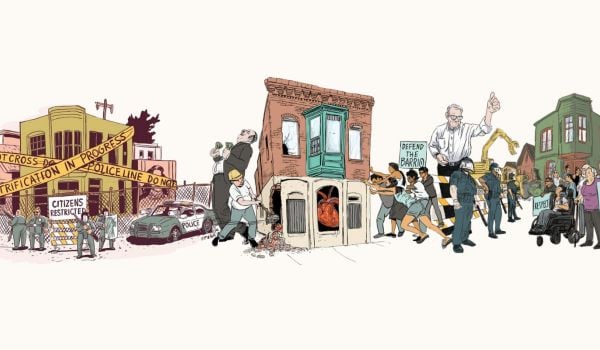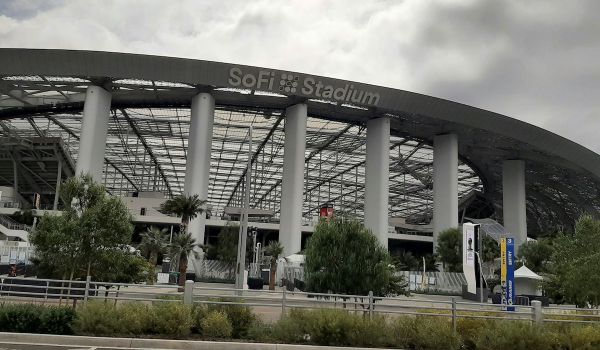Some bats loves their local sports teams. It doesn’t matter what game is being played or how the team’s record is, the bats are happy as long as the stadium lights up every night and they can gorge themselves on the insects that are attracted to the spot lights. But not all bats are rooting for the home team, and recent research suggests that while stadium lights are creating feasts for some species, they’re also causing famines for others.
Leading up to the 2010 World Cup, South Africa built five new soccer stadiums, upgraded existing ones and made various improvements to the infrastructure in cities across the country. At the time, Corrie Schoeman, an ecologist at the University of KwaZulu-Natal, was studying how urban water pollution affects insects, the predators that feed on them, like bats, and then the predators’ predators. Seeing the stadiums light up at night and construction work being done under bright spot lights, he started to wonder if light pollution might have a similar ripple effect.
“When you drive around these urban landscapes, what strikes you is that these stadiums have a light signal and intensity that is often much brighter than the surrounding landscape,” he says.
“So although you have an urban landscape with lots of light pollution, you also have particular sources that are unusually bright. With time I started thinking this is how landscapes that are already impacted by light pollution might still be driven by new sources of light pollution.”
To see how these new, bright stadiums affected bats — which are more affected by light pollution than many other animals because they’re nocturnal — Schoeman visited seven stadiums around the city of Durban, South Africa’s third-largest city. He spent 12 nights at each stadium — six when the spot lights were on, and six when the stadiums were dark — watching for bats and listening to them with recording equipment that captured the ultrasonic calls they use to hunt and navigate.
“In the beginning, it was kind of strange because you’re the oddball who goes to these stadiums at night where people are practicing rugby and football, and you’re sitting there on the side with headphones on and your laptop and you’re staring up at the sky while everyone else is looking at the field,” Schoeman says.
As the study went on, though, Schoeman’s fellow spectators and even some of the players got used to him coming to the stadiums and started talking to him about what he was doing. “To this day I still get emails from some of these guys wanting to know how my research is going,” he says.
Schoeman made some new friends, but also got some concerning results. While there was generally much more bat activity, especially hunting, when the stadiums were lit, not every bat was enjoying the buffet.
Schoeman identified twelve different bat species (based on characteristics of their echolocation calls) flying around the stadiums, but just four of them accounted for about 80 percent of total bat activity. Other species were less active, and two species were only recorded once each when the stadiums were dark. These bats seemed to shy away from the stadiums even if there were meals to be had, and didn’t benefit from stadium lights the way the others did.
Schoeman thinks there’s two reasons that stadiums favor some bats, which he calls the “urban exploiters,” over others, the “urban avoiders.” First, by attracting insects, they draw prey away from places where urban avoiders have access to them, letting the urban exploiters outcompete them for food.
On top of that, the species that are urban avoiders tend to be slower flyers, and flapping around the open, well-lit stadiums leaves them more vulnerable to being hunted by other predators. The lights don’t just draw bats and bugs, but also birds like hawks and owls. “When sitting at these stadiums, often I saw birds of prey hunting the slow-flying bats trying to utilize the insects,” Schoeman says. When the urban avoiders do venture out for some stadium snack, they put themselves in harm’s way.
The brightly lit stadiums, while good for some bats, could eventually cut others off from an important food source, hurting bat diversity in the long run.
“I think this light pollution source will be a major driver of homogenizing this system,” Schoeman says. “It negatively impacts certain species to such a degree that I think these species will be driven from the urban landscape.”
Fortunately, light pollution is easier to “clean up” than most other kinds of pollution. “The major thing we can do is create as much dark space as possible,” Schoeman says. One of the stadium managers he talked to during the study decided to pack his schedule more tightly so he could limit the number of nights that he lights up the building from five nights a week to two. That would draw in insects less often, leveling the playing field for the urban avoiders and letting them have their shot at the bugs.
While the idea that a night at the ballpark or stadium could hurt nature’s exterminators — bats save us billions of dollars a year in pest control and crop damage — is worrying, Schoeman found a silver lining to his work in the way he connected with the people he met in the stadiums.
“I’m amazed at how interested people become when you make them aware of the biodiversity on their doorsteps,” he says. “How easy it is to engage them and get them really excited about what’s going on around them, and make them aware of the subtle things they can do to make their environment last longer for future generations.”
Matt Soniak writes about science, history and Bruce Springsteen for a variety of outlets. His work has appeared in print and online for Mental Floss, The Week, Slate, Men’s Health, Scientific American, The Atlantic, ScienceNow and others. He lives in Philadelphia.













